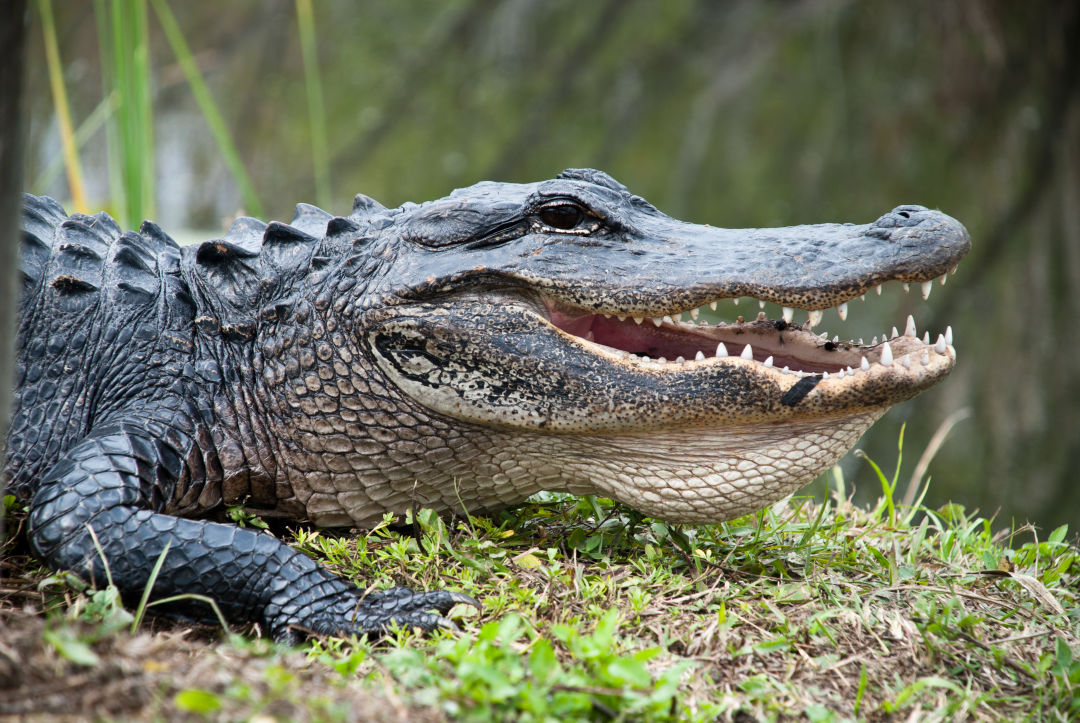Everything You Need to Know About American Alligators

An American alligator
The American alligator, our state reptile, was included in the first list of endangered species the United States Department of Interior issued in 1967. For more than a century, beginning in the 1800s, alligators had been hunted and poached beyond their ability to replenish their numbers. But thanks to the alligator’s inclusion on that list, as well as passage of the Endangered Species Act in 1973, alligators are currently listed as a “least-concern species,” meaning that they are still plentiful in the wild. However, as their habitat shrinks due to human development, the risk of the alligator becoming endangered again is rising.
View this post on Instagram
Live Long and Prosper
Alligators have the potential to live to 70 years old, which means that there might be an alligator in the Myakka River right now that hatched all the way back in 1953. Gators typically hatch in groups of 24 to 37 and emerge from their nest between mid-August and September. Our imagined Myakka gator would have been one of the 10 to survive its first year, one of eight to make it to sub-adulthood (reaching 4 feet in length) and then one of five to reach maturity. Someone could have come across a rare sighting of an alligator as a child of the late 1950s and see that same creature sunning itself today.
Cold Claws, Warm Heart
While alligators are cold-blooded animals, they don’t have a typical reptilian three-chambered heart. Their four-chambered hearts are more like those of warm-blooded mammals and avians, which helps prove that they share a common dinosaur ancestor with birds. However, they have evolved a shunt between the left and right aorta that allows their heart to function like three-chambered ones do, enabling a lower metabolic rate that they need to stay underwater for extended periods.
Watch Out
In Florida, you can assume that alligators can be found in any fresh or brackish water. Thousands of alligators thrive in the lake, rivers and wetlands of the Myakka area. As alpha predators, they keep aquatic animal populations in balance. Even so, small alligators or even alligator eggs are an essential part of the food chain and can be snatched by fish, birds, snakes, raccoons and, yes, larger alligators.
All Brawn, No Brain
Appropriate to the phrase “reptilian mind,” alligators operate on instinct. Their brains are so tiny they cannot think or consider. Their opportunistic feeding style is evidence of this. But there are some things they know to be true: Birds are a terrible meal, due to having very little meat on their bones, which is why birds can stand and hunt peacefully along shorelines. As for humans, few alligator encounters result in direct fatalities, but bites can cause serious infection so medical treatment is necessary.
If You See Something, Say Something... Maybe
If you are concerned about the presence of an alligator, the Florida Fish and Wildlife Conservation Commission has a toll-free Nuisance Alligator Hotline at 866-FWC-GATOR (866-392-4286). Before calling about an alligator, though, be sure that it meets the criteria to be considered a nuisance. It must be at least 4 feet in length and believed to be a threat. If smaller alligators find their way into a pool or garage, for example, they can be removed. With a healthy population of alligators already inhabiting wild areas, nuisance alligators are not relocated but are humanely euthanized. While we all want to live a safe long life, so do they.



